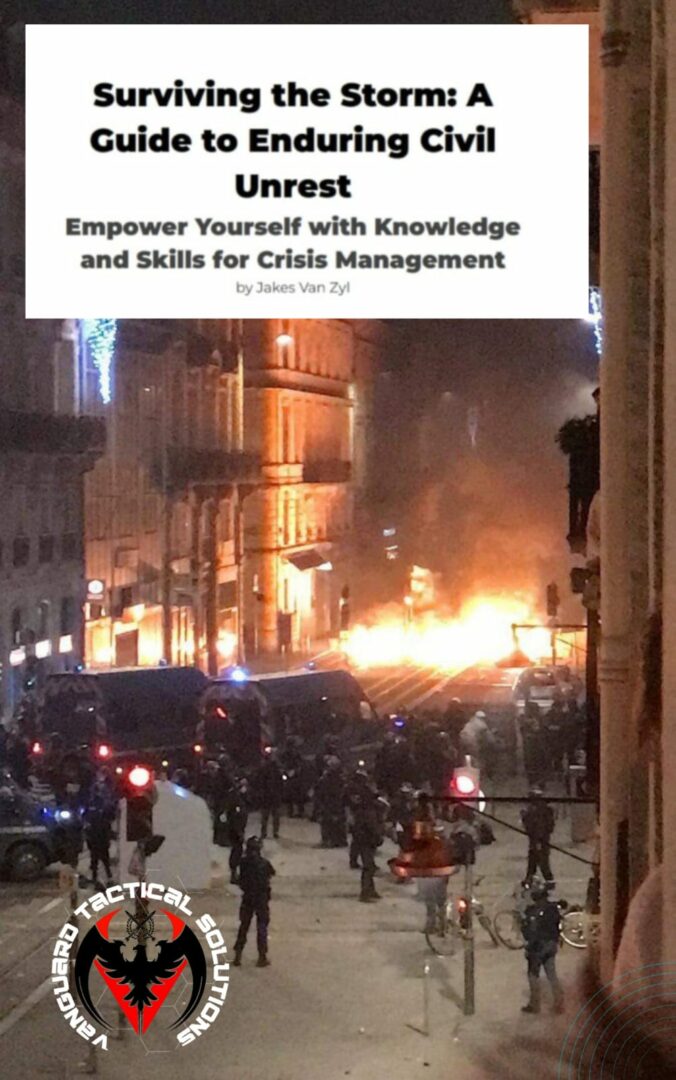Description
Objective of the Book:
To equip readers with essential strategies and insights for
navigating civil unrest, fostering preparedness, resilience, and
community support.
2. Book Structure:
The book is structured into thematic sections that cover
preparation, response, and recovery, interspersed with real-life
case studies and practical exercises.
– Understanding Civil Unrest
– Preparing for the Unexpected
– Safety Protocols During Unrest
– Effective Communication in Crisis
– Building Emotional Resilience
– Learning from the Past
– Community Building and Support
– Resourcefulness in Crisis
– Post-Crisis Recovery
– Empowering Yourself and Others
– Creating Your Personal Action Plan
3. Main Characters:
The Prepared Citizen: A relatable figure who embodies the
proactive mindset necessary for navigating civil unrest, sharing
personal anecdotes and insights.
The Community Leader: An inspiring character who mobilizes
community efforts, demonstrating the power of collective action
and support during crises.
The Historian: A knowledgeable guide who provides context and
analysis of historical civil disturbances, linking past events to
present-day strategies.
4. Central Themes:
Preparedness: The importance of being ready for unexpected
events and having a plan in place.
Resilience: Building emotional and mental strength to cope with
crises and support others.
Community Solidarity: The vital role of community connections
and support networks in times of unrest.
Empowerment: Encouraging individuals to take charge of their
safety and well-being through knowledge and action.
5. Writing Style:
The writing style should be engaging, accessible, and informative,
blending practical advice with compelling narratives and real-life
examples to inspire and empower readers.
6. Reader Engagement Strategy:
To keep readers engaged from the first page to the last, the book
will employ a dynamic blend of storytelling and practical advice.
Each chapter will open with a gripping anecdote or case study
that illustrates the theme at hand, drawing readers into the
narrative. Interactive elements, such as reflection questions and
actionable exercises, will encourage readers to apply what they
learn in real-time, fostering a sense of involvement and urgency.
Additionally, the use of relatable characters, like ‘The Prepared
Citizen’ and ‘The Community Leader,’ will create emotional
connections, making the content not just informative but also
personally relevant and inspiring.
7. Final Considerations:
This book is not just a guide; it’s a lifeline for individuals and
communities facing the uncertainties of civil unrest. By weaving
together historical insights, practical strategies, and emotional
resilience, it offers a comprehensive toolkit for navigating crises.
The structure allows for easy navigation through complex topics,
ensuring that readers can find the information they need quickly
and effectively. The engaging writing style will resonate with a
broad audience, making the content accessible and actionable for
everyone.
8. Chapter structure and a brief summary of the content of
each chapter:
Understanding Civil Unrest: This chapter explores the roots of civil
unrest, examining historical examples and the socio-political
factors that contribute to societal upheaval. It sets the stage for
understanding the unpredictable nature of such events.
Preparing for the Unexpected: Readers will learn how to create a
personal safety plan, gather essential supplies, and establish
communication networks with neighbors and community
members to ensure collective safety.
Safety Protocols During Unrest: This chapter provides actionable
steps to take during an outbreak of civil unrest, including how to
assess risks, navigate dangerous situations, and utilize safe routes
for evacuation.
Effective Communication in Crisis: Readers will discover
techniques for maintaining effective communication with family,
friends, and community members during crises, including the use
of technology and social media.
Building Emotional Resilience: This chapter focuses on the
psychological impact of civil unrest and offers tools for building
emotional resilience, managing stress, and supporting others in
the community.
Learning from the Past: Through detailed case studies, readers will
analyze past civil unrest events, extracting lessons learned and
applicable tactics for modern-day scenarios.
Community Building and Support: This chapter emphasizes the
importance of community solidarity and offers strategies for
fostering connections and support networks that can be vital
during times of unrest.
Resourcefulness in Crisis: Readers will learn how to identify and
leverage local resources, including shelters, food banks, and
community organizations, to navigate crises more effectively.
Post-Crisis Recovery: This chapter outlines the recovery process
following civil disturbances, focusing on rebuilding community
ties, addressing trauma, and planning for future resilience.
Empowering Yourself and Others: Readers will be inspired to take
an active role in their communities, advocating for safety
measures and participating in local initiatives to enhance
preparedness.
Creating Your Personal Action Plan: This final chapter provides a
step-by-step framework for readers to create their own
personalized action plan, integrating all the knowledge and skills
acquired throughout the book.






Reviews
There are no reviews yet.